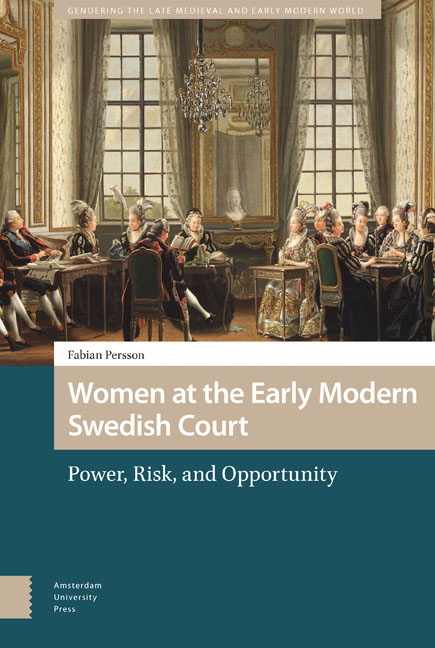3 - All the Queen’s Women
Published online by Cambridge University Press: 15 April 2021
Summary
Abstract
The several hundred noblewomen who served at the Swedish court from the sixteenth to the eighteenth centuries shared some characteristics, the most important of which was noble birth. Perhaps the increasing freedom coupled with, paradoxically, limited means meant that the court was a more attractive long-term prospect. Service at court could also bring a degree of freedom. It meant an income and an array of perquisites. It could also mean, increasingly so over time, greater freedom in meeting and assessing men on the marriage market. To have one's own livelihood and the freedom to explore and even reject possible suitors was perhaps something to savour for many years.
Keywords: recruitment, marriage, rank, perquisites
In 1635, Queen Dowager Maria Eleonora dispatched a letter instructing a provincial noblewoman, Margareta Lillie, to send her seventeen-year-old daughter Margareta Oxehufvud to become a Maid of Honour. Lillie had been visiting Stockholm, but was now bound for her estates. Lillie acceded to the request and promised to send her daughter to the Queen Dowager. Then the Queen arranged transport for young Margareta Oxehufvud to come to court together with her mother. Six months later the girl's father invited the Queen to the double marriage of Oxehufvud's sisters. The Queen was indisposed, but instead asked a highly aristocratic woman, Countess Beata Brahe, to act as her stand-in at the wedding. In 1637, Oxehufvud herself married a well-established and successful courtier almost 20 years her senior: a widower who had been married to another Maria Eleonora's Maids of Honour. Oxehufvud's brother some years later was given a position as a courtier, and her own daughter would serve as Maid of Honour at a one of the lesser royal or satellite courts. The following year, Maria Eleonora approached another mother in similar fashion and got her to send her daughter to serve as Maid of Honour to Queen Christina. The Queen Dowager promised to care for her and look after her affairs, taking on a parental role.
This seems to have been the standard way to recruit noblewomen to serve at the Swedish court, as will be seen. At least formally the initiative came from a queen, though naturally behind that ritual negotiation may have been a reality of families pressing the Queen to accept a member into service. It is also telling that the transactions were between queens and mothers, without the fathers being involved.
- Type
- Chapter
- Information
- Women at the Early Modern Swedish CourtPower, Risk, and Opportunity, pp. 77 - 102Publisher: Amsterdam University PressPrint publication year: 2021



